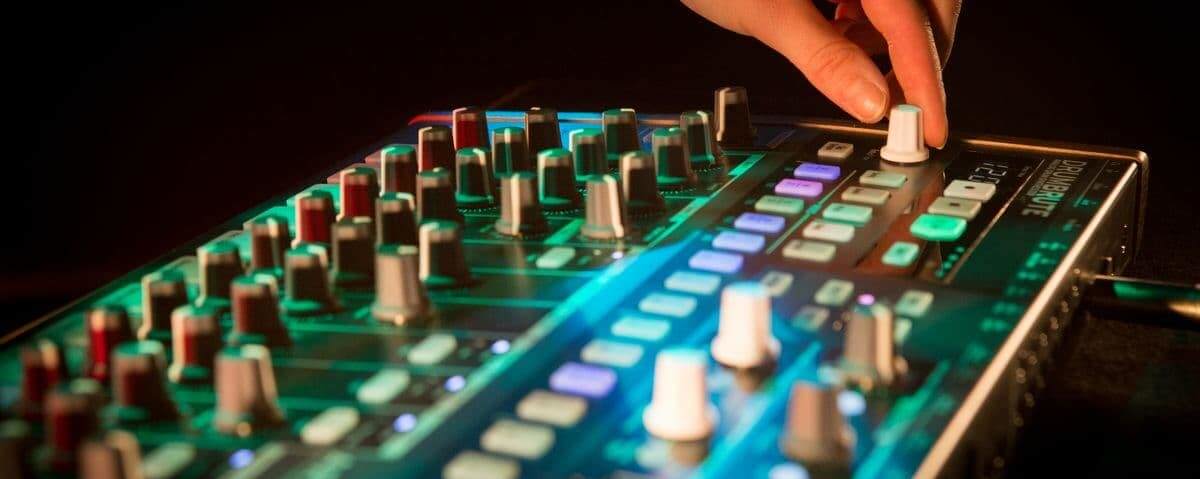Elektron Analog Rytm MKII
Launched: 2017
Original MSRP: $1649
Current Price: $1439
When first released, the Analog Rytm was Swedish electronic instrument maker Elektron’s entry into the analogue machine drum category. Coming out the same year as its wildly popular sampling and drum computer, the Digitakt, the Rytm II fused analogue circuitry with Elektron’s distinctive combo of rotary knobs and menu diving, as well as sampling capability and digital effects processing. As a result, the Rytm MKII is something of a cross between the Digitakt and Sequential’s Tempest drum machine.
The Analog Rytm features eight analogue voices that can be assigned to twelve tracks, each of which can be layered with factory or user samples. These sounds are then routed to a multimode filter, overdrive, filter and amp envelopes, and an LFO for modulation capabilities. This functionality, along with the drum pads, is really where the Rytm shares some commonality with the Tempest. But its workflow has a great deal in common with the Digitakt and the Octatrack.
Like other Elektron products, one of the Analog Rytm’s strong suits is the parameter locks, trig conditions, and micro timing — functions that allow users to break out of the 64-step sequencer. Pattern chaining is also possible on this drum machine, allowing users to create entire songs instead of just isolated loops.
And it’s also helpful to not just think of the Analog Rytm has a drum machine. Since analogue sounds can be tuned and it can handle synth samples, it can also function as monophonic and polyphonic (4 notes) synthesizer. Originally, users had to load samples onto the Rytm mkII via Elektron’s Transfer software; but, an update now allows users to directly sample into the Rytm II via audio inputs.
One minor quibble is that users must use Elektron’s Transfer software to load samples from a computer onto the Analog Rytm. It’s a bit confusing why Elektron would go this route, given that the Digitakt can do direct sampling right into the box. But, again, minor quibble because the new sampling capability didn’t exist on the MKI; and it allows users to load single-cycle waveforms for unique synth sounds.
The Analog Rytm is otherwise really versatile and powerful. And unlike some other drum machines on this list (Volca Beats and TR-8S), the Analog Rytm represents a more futuristic conception of the instrument.
